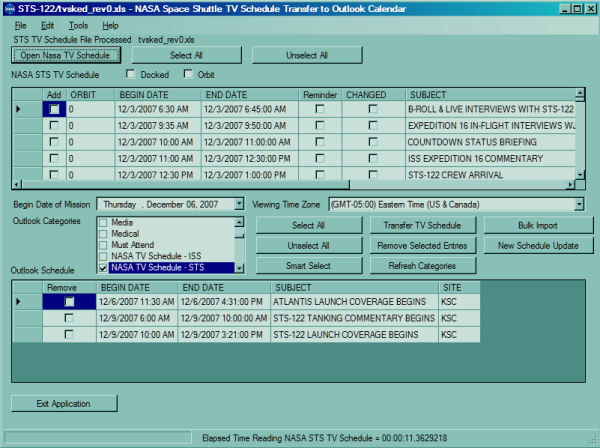


#Nasa space shuttle landing schedule manual#
"Monitoring" the approach versus actually "controlling" it induces a time lapse in the mental-to-physical control conversion process which increases in criticality for manual takeover as the aircraft approaches touchdown. The practice of having to salvage a good landing out of a poor approach is not professionally accepted airmanship.įurther, the STS-3 experience was classified as a “late-takeover” action in which a failure of the autoland system in even closer proximity to touchdown could result in an upset too late in the landing phase to be reasonably recoverable. That is, an automatic system cannot be reasonably certified for an aircraft without a go-around capability in the event of an autoland system failure, because the only recourse in the Shuttle is to land rather than to execute a wave-off maneuver as in a powered aircraft. He didn't really have enough time to get a feel for the aircraft or make corrections, so it hit hard and fast.Īfterwards, it was decided to discontinue testing of the autoland system, although the implementation was eventually completed.ĭevelopment of an automatic approach and landing system was terminated indefinitely due to the inability to implement an FAA -like powered aircraft certification program for an unpowered glider like the Space Shuttle. The autopilot was unable to maintain a stabilized airspeed, at first closing the speedbrake completely, then opening it again until airspeed was low, then closing again at 4000 feet which caused the orbiter to be too fast by the time commander Jack Lousma took over. The result was one of the worst landings in the history of the program. They did try evaluating an incomplete implementation of the autoland on STS-3, where the lineup, final approach (outer glide slope), and preflare maneuvers would be performed by the autopilot, at which time the commander would take control and complete the landing. If anything went wrong, the shuttle has no ability to disengage and go-around, and it might be too late for a human pilot to intervene and still make a safe landing. Unfortunately, testing autoland on the space shuttle was a bit risky. When the shuttle was being developed, it was imagined that flights could last so long that human pilots might get rusty, or have their ability to function under gravity impaired due to muscle atrophy from extended time in micro gravity. The space shuttle did have autoland capability, in theory. Since that's really three questions, I'll address them separately.


 0 kommentar(er)
0 kommentar(er)
